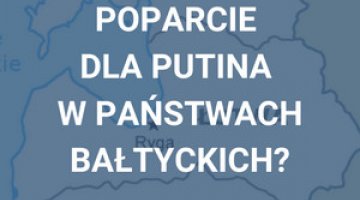Latvia’s preparations for the introduction of the euro
The date of Latvia’s accession to the eurozone will be determined in the summer of 2013 by the Council of the European Union on the basis of an analysis of the country’s progress in preparations for accepting the euro as its national currency. The Council of the EU will also determine the exchange rate, which is likely to be at a similar level to the present, i.e. 0.702 lats to 1 euro. According to Latvian data, the country met the Maastricht criteria already in autumn 2012. Latvia has been included in the European Exchange Rate Mechanism (ERM II) since 2005, which reduces euro exchange rate fluctuations to approximately 15%. Already 80% of loans and 40% of savings accounts in Latvia are in euros. Support for Latvia’s accession to the eurozone in January 2014 has also been given by the European Commission and the European Central Bank. Latvia will be the second Baltic state to enter the eurozone after Estonia, which joined in January 2011. The newly elected Lithuanian government is also intensifying efforts to introduce the euro in 2015.
-
Latvia was prevented from entering the eurozone in 2008 due to the global economic crisis. The impact this had was particularly strong for Latvia, the most rapidly developing economy in Europe at the time. The country’s real gross domestic product in 2008–2009 fell 37% against 2007 figures, when its level was the highest. This forced the government, despite violent public protests, to cut spending, raise taxes, and accept financial assistance from the IMF. The Latvian government claims that its strategy, which has been focused on joining the euro, has helped the country to overcome deep recession. The readiness to join as soon as January 2014 is supposed to prove that the Latvian economy is in a good condition and that Latvia has recovered from the crisis.
-
Latvia’s presence in the eurozone may have a disciplining effect on its other member states which have economic problems. This will also strengthen the position of those countries which insist that stricter financial discipline be applied in the eurozone to enable recovery from the crisis. On the other hand, Latvia and Lithuania – like Estonia before them – have recognised eurozone membership as an important step which will bring them closer to the EU member states which form the group of European leaders. Since Latvia had to apply for financial support to the IMF at the time of deep recession, it now sees the obligation to pay 325 million euros to the European Financial Stability Facility as a form of ensuring financial security also for itself.
- The problem the Latvian government needs to face is low public support (8%) for the introduction of the euro. 42% of the public would prefer to postpone this decision, 41% of respondents are opposed to it, and the others have not made up their minds. Latvians fear this change and the new costs it will entail (higher prices and inflation). They do not believe in the government’s assurances that the Latvian currency, with the fixed euro exchange rate applied, has been influenced by the same trends as the euro over the past few years. The centre-left opposition, namely the Harmony Centre (the largest political party to represent the Russian minority in parliament) and the Union of Greens and Farmers, are capitalising on these fears. Although there is no such legal requirement, the opposition insists on a referendum being held concerning the euro. This is part of the preparations in the campaign preceding local elections (June 2013), during which the Harmony Centre will make efforts to maintain power in Riga.





